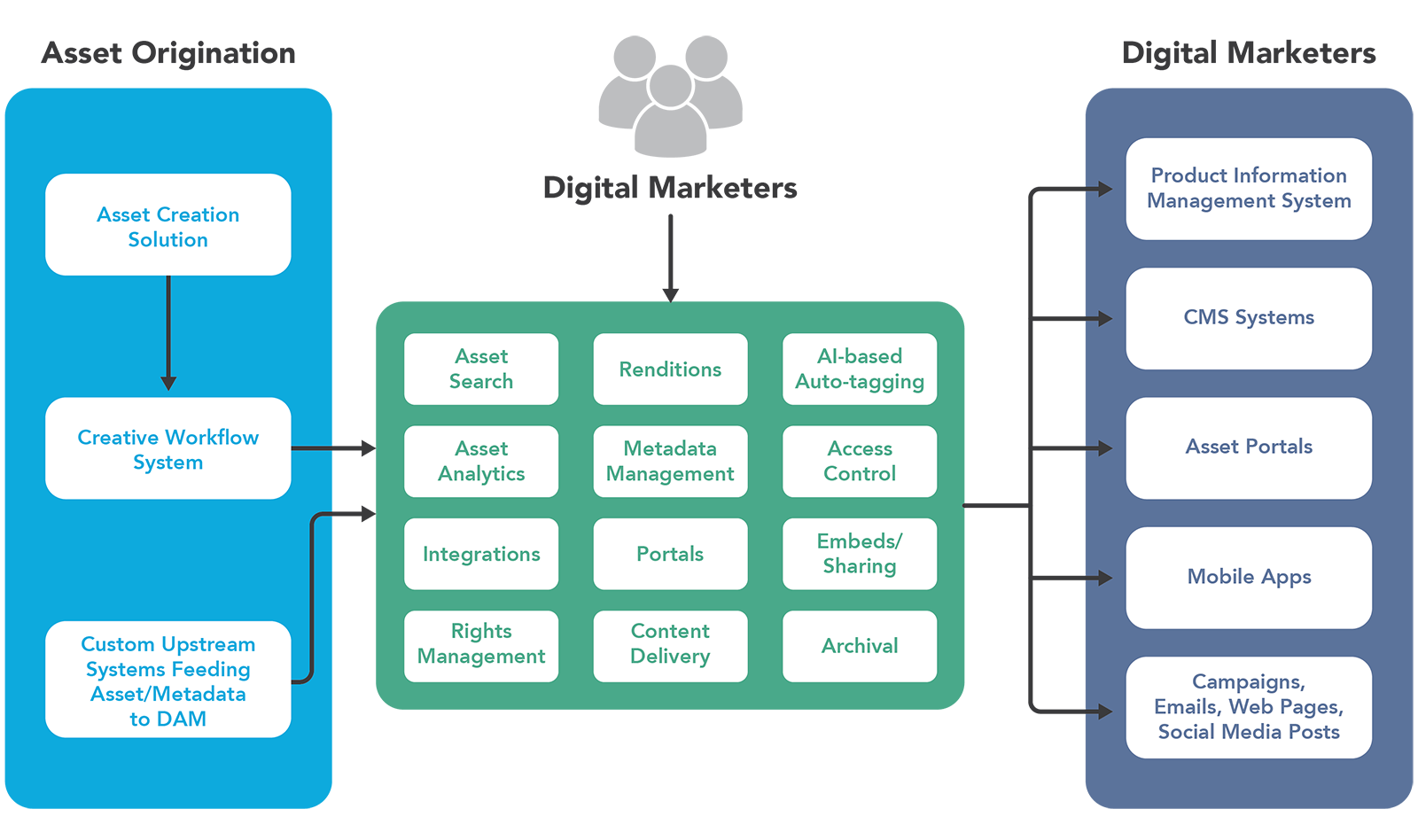- Posted on : June 13, 2024
-
- Industry : Corporate
- Service : Digital Experience Platforms
- Type: Blog

Digital assets are the bloodlines of a content-centric business. Enterprises invest a fortune to procure assets from vendors. Any asset an enterprise owns, like an office building, machinery, or computers, needs management. Digital assets are no different. A digital asset can be as small as a logo or as large as a video played on one of those large LED displays of Times Square in New York. It can be an image, audio, or PDF file. It can also be a zip file, which contains many other files. It can be an executable file that a car manufacturer releases periodically to keep the in-car entertainment systems up-to-date.
Imagine there is an image of a famous football star holding a product (manufactured by an enterprise). A lot of money is invested in creating that image, which is sold to the enterprise by the creative agency that created the image. Now, this digital asset, just like any other physical asset, needs to be managed well to maximize returns on the investments made toward procuring this digital asset. How do we maximize the return on the investment? Returns can be maximized by utilizing this image to generate interest in the product, consequently driving the sales of the advertised product. The critical factor in maximizing the return on investment is optimizing the asset's utilization in general. The asset should be visible to increase its utilization.
In other words, it should be easy for the marketing team to find the asset. Digital files are hard to find since the content within the file, i.e., photos and videos, are not searchable. Hence, assets can be made more searchable by adding data about what is happening in the asset. In the above example of our product being endorsed by a famous football star, what if we include textual data with the image that says "Product AS1022 being endorsed by <football star name>"? The text data is more searchable. When a marketeer searches for AS1022, this asset will surely come up. Hence, this makes our asset, in turn, more searchable. Behold "The Metadata". Any data that provides more information about another piece of data is our "Metadata." The more metadata an asset has, the more the searchability - isn't that right? Not quite! When it comes to metadata, more is not better. Better structured, concise metadata always wins over large unstructured metadata. Metadata is an important case for digital asset management systems. But there are others as well. DAM systems bring the following advantages to an enterprise:
- Increase ROI on assets by maximizing reuse
- Improve search performance of assets
- Enforce permission on assets
- Reduce legal consequences by automatically bringing down assets on their expiry dates
- Provide portals through which users can easily consume the assets
- Provide analytics and reporting on asset usage, which can give a clear view of ROI
- Integration with other digital systems in the landscape, like PIM, CMS, personalization systems, etc.
DAM positioned in a typical digital landscape

Typical touch points of a DAM system
Asset origination
- These systems generate the assets that need to be managed by DAM
- Some creative applications will be used to create the assets; more often than not, these systems can push assets to DAM directly.
- The creatives flow through an approval workflow and marketing resource management tools in more mature processes.
- Other systems may feed the metadata or binaries to DAM systems.
- Stock asset providers can provide generic assets.
Asset consumption
These systems consume the assets managed by DAM
- PIM systems that use asset links as attributes against product SKUs
- CMS systems that reference images and videos on DAM to build web pages
- Mobile apps also reference images and videos on DAM
- Portals that expose digital assets to a selected subset of external users.
- Advertising and Marketing campaigns (emails, banners, web pages, social media posts, etc.)
There are plenty of Enterprise DAM systems in the market, and Acquia DAM is one of them. Acquia DAM was earlier known as Widen DAM and was rechristened Aquia DAM after Acquia took over the DAM.
Recently, Infogain implemented Acquia DAM for one of its clients, one of the leading manufacturers of computers, laptops, and accessories. This was a large migration consisting of ~1.8 million assets with a size close to 50 TB. Each asset carries 60+ metadata fields of varying format. This implementation also involved multiple integrations with cloud-based and on-prem legacy systems. The client reported the following improvements with the new Acquia DAM:
- Increase in utilization of the assets
- Reduction in overall cost to manage their digital assets
- Improved search performance and an overall better user experience
In the next blog, I will explore the nuances of Acquia DAM implementation in-depth. Stay tuned!






